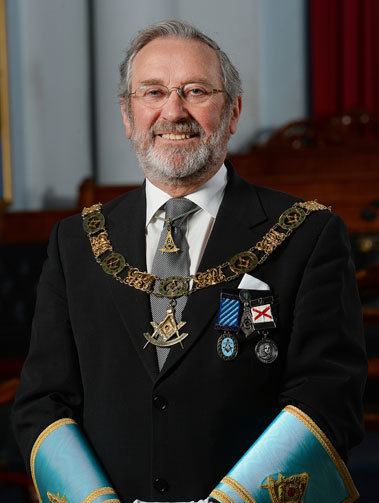Constituted 1725 Location DublinIreland | Website freemasons.ie | |
 | ||
Latin Motto Fiat lux, et facta est lux English Motto "Let there be light," and there was light. (Genesis 1:3) | ||
The Grand Lodge of Ireland is the second most senior Grand Lodge of Freemasons in the world, and the oldest in continuous existence. Since no specific record of its foundation exists, 1725 is the year celebrated in Grand Lodge anniversaries, as the oldest reference to Grand Lodge of Ireland comes from the Dublin Weekly Journal of 26 June 1725. This describes a meeting of the Grand Lodge to install the new Grand Master, The 1st Earl of Rosse, on 24 June. The Grand Lodge has regular Masonic jurisdiction over 13 Provincial Grand Lodges covering all the Freemasons of the island of Ireland, and another 12 provinces worldwide.
Contents
History
There is considerable evidence of Masonic Lodges meeting in Ireland prior to the 18th century. The story of the "Lady Freemason", Elizabeth St. Leger, dates to a time prior to the existence of the Grand Lodge; also, there are references to Lodge meetings across Dublin in a speech given in Trinity College, Dublin, as far back as 1688. The oldest artifact of Fraternal Masonry in Ireland, and one of the oldest masonic artifacts in the world, is the Baal's Bridge Square, on which the date 1507 is inscribed. The brass square was recovered from Baal's Bridge in Limerick during reconstruction in 1830, and appeared to have been deliberately placed under the foundation stone of the old bridge. It is inscribed with the phrase, "I will strive to live with love and care, upon the level and by the square."
According to the Dublin Weekly Journal, The 1st Earl of Rosse was elected as the new Grand Master of the Grand Lodge of Ireland on 26 June 1725. The attendant procession included the Masters and Wardens of six lodges of "Gentleman Freemasons". The article has the strong implication that this was not the first such election, but since no earlier reference has yet been found, the Grand Lodge of Ireland dates its foundation to 1725, making it the second oldest, and the oldest extant Grand Lodge in the World. At least as early as 1726, there was also a Grand Lodge to the South, in Munster, which was absorbed by Dublin Grand Lodge in 1733.
The Irish Grand Lodge was the first to issue warrants to lodges in their present form, and, unlike the other Grand Lodges in London and Edinburgh, had no problems in issuing warrants for travelling lodges. Thus it was that the majority of masonic lodges in the British Army, wherever they came from, were warranted under the Irish Constitution. The form of masonry that the British Army spread in the colonies was predominantly Irish. It was an English regiment with an Irish warrant that started the lodge from which Prince Hall Freemasonry sprang.
In England, it was Irish Freemasons who set up a rival to the Premier Grand Lodge of England, in the form of the Grand Lodge of England which we now call the Antients. The Grand Secretary of the Antients, Laurence Dermott, based his regulations on Spratt's Irish constitutions. It was the Antients' ritual form that prevailed when the two rival English Grand Lodges joined in 1813.
The early nineteenth century brought a series of setbacks for the Grand Lodge of Ireland. A dispute over the higher degrees led to a breakaway Grand Lodge of Ulster, operating from 1805 for nine years. The Irish Famine of 1823 caused unrest, in which some lodges became centres of Republican activity, and Irish Freemasonry was briefly proscribed by the Government until 1825. In 1826, the Papal condemnation Quo Graviora, although only the latest of a series of anti-masonic measures by the Church, was the first to be rigidly enforced by the Irish clergy. Many Catholic Freemasons were threatened with excommunication, and resigned as a result.
During the 18th century, individual Lodges had met at inns, taverns and coffee houses, while the meetings of the Grand Lodge generally took place in civic and guild buildings. During the early 19th century Grand Lodge began leasing buildings as semi-permanent Masonic facilities, for example, the Grand Lodge for a time held residence at No. 19, Dawson Street in Dublin which is the current home of the Royal Irish Academy. From Dawson Street, the Grand Lodge moved to Commercial Buildings on Dame Street until Grand Lodge along with most Metropolitan Lodges moved to a new, purpose built facility on Molesworth Street. In 1869 the current, purpose built headquarters of Irish Freemasonry, Freemasons' Hall on Molesworth Street, opened, housing dramatically decorated Lodge rooms, a library, museum, offices and dining areas.
Provincial Grand Lodges in Ireland
Provincial Grand Lodges Overseas
There are additionally several overseas lodges not attached to provinces, and two travelling lodges attached to British Army regiments.
